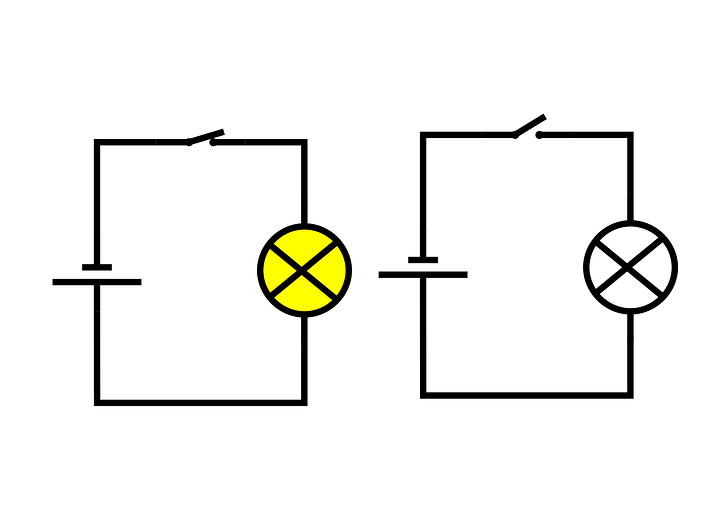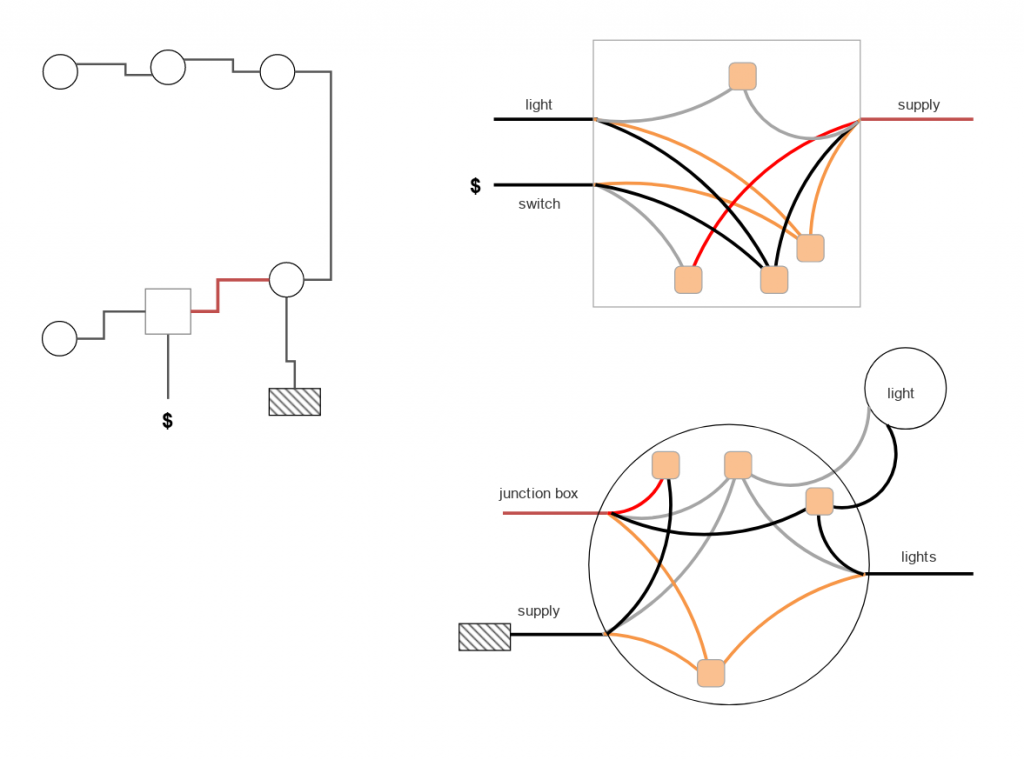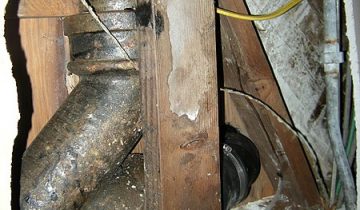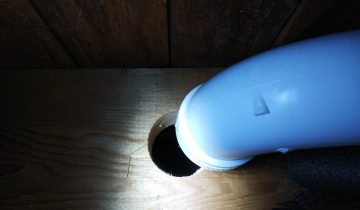Can’t get enough education, can you? Learning about electricity keeps you coming back for more?
Isn’t home ownership great? Its the learning experience that never ever ever stops! Even when you wish it did!
Electrical Circuits
Ah yes, we left off with wires all over the place and nothing to connect them to! A basic circuit looks like so:

This is really as simple as it gets. Nothing fancy, just a power source, a load (a light bulb in this case), and a switch to turn it on and off.
There are two important distinctions for how electricity is run across multiple loads, or things that use electricity, in a circuit. They can be in parallel, or they can be in series.

If you have ever handled an old string of Christmas lights, you know how annoying a circuit wired in series can be. If one element of the circuit goes out, the entire circuit is broken. But, if it were wired in parallel, any combination of bulbs could be blown and the rest would continue working.

So then why aren’t Christmas lights wired in parallel? Great question. But for we homeowners, every individual load element should be wired in parallel. A plug, a light, or a hardwired fixture (like a dishwasher) each count as one element. Then, in series with these loads, we can optionally wire switches to turn the loads on and off. You might want a switch in series with your garbage disposal, for instance, or your basement lights.
How do you know how much stuff to put on a circuit?
The first thing you need to do with starting such a project would be to think about safety. That not only involves turning off the power and making sure it’s off, but also figuring out how much load is on this circuit already, and calculating what you will be adding. Without getting too much into weeds on power factor, the max load in a circuit is measured with:
Watts = Amps x Volts (x Safety Factor)
In the US, volts is a standard 110. It can fluctuate up a bit and sometimes you will see stuff rated for 120v, but its safer to use the 110v in this calculation.
Amps are set by the circuit breaker you are switching. This value is generally 10 through 50A, but for whole houses or big applications, it could be more. For most basic circuits, you’ll use 15A, while for heavier use areas like bathrooms and kitchens, you’ll want 20A circuits.
That leaves us with watts, the most load we can add to a circuit. This is easiest to think of as light bulbs. An LED light bulb uses about 9W, a CFL about 13W, and a regular incandescent 75W.
For a 15A circuit, then, we would be theoretically able to load up the circuit with 15A x 110v = 1650W before it trips. But, a load this size would indeed trip the circuit breaker. Circuit breakers trip at 100% of their load, so if you plugged in two air fryers, at about 1400 watts each, that 15A breaker would be donezo.
So, we factor in a safety rating. The National Electrical Code (NEC) recommends 80% continuous draw load on breakers, so let’s multiply our result: 15A x 110V x .8 = 1320W. This is the most we would want on that circuit at any given time. A single air fryer might be alright. (See why you want beefier circuits on kitchens?)
Neat. So how do we wire up some stuff?
Well, it just so happens I have a semi-simple circuit diagram to talk about.

OK, I know that looks confusing. But we’ll reference it again. This is the (quick and dirty) circuit diagram for the hoard basement lights. There are 5 lights in the basement all on one 10A circuit breaker, and this could feasibly hold 880W, which is plenty for 5 light bulbs, even the big 100W ones. We will put one switch in series with all the lights, so they turn on and off together, but we will make sure the lights are wired up in parallel, so any single burnt bulb will not cause the others to go out.
Now, the $ symbol is the switch. It has to receive power first, so it…
You know what, how about I just show you? TO THE LAB!




Never have I ever seen a light fixture capable of being wired in serial that took out the rest of the circuit when the light bulb went out. Is that really a thing?
NM. What I was thinking of wasn’t really serial.
you right 🙂 all of the fixtures would need to be parallel to each other to avoid one bulb breaking the loop. as long as the junctions are set up properly!